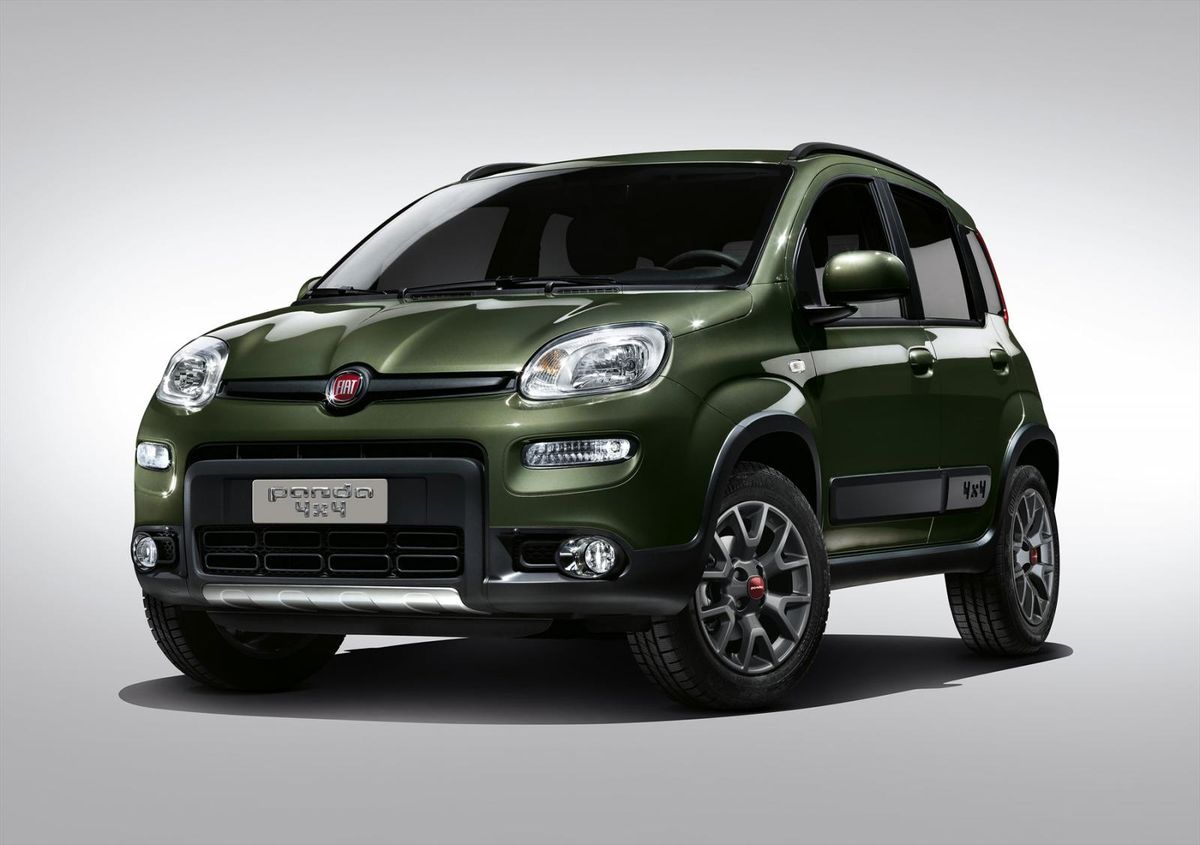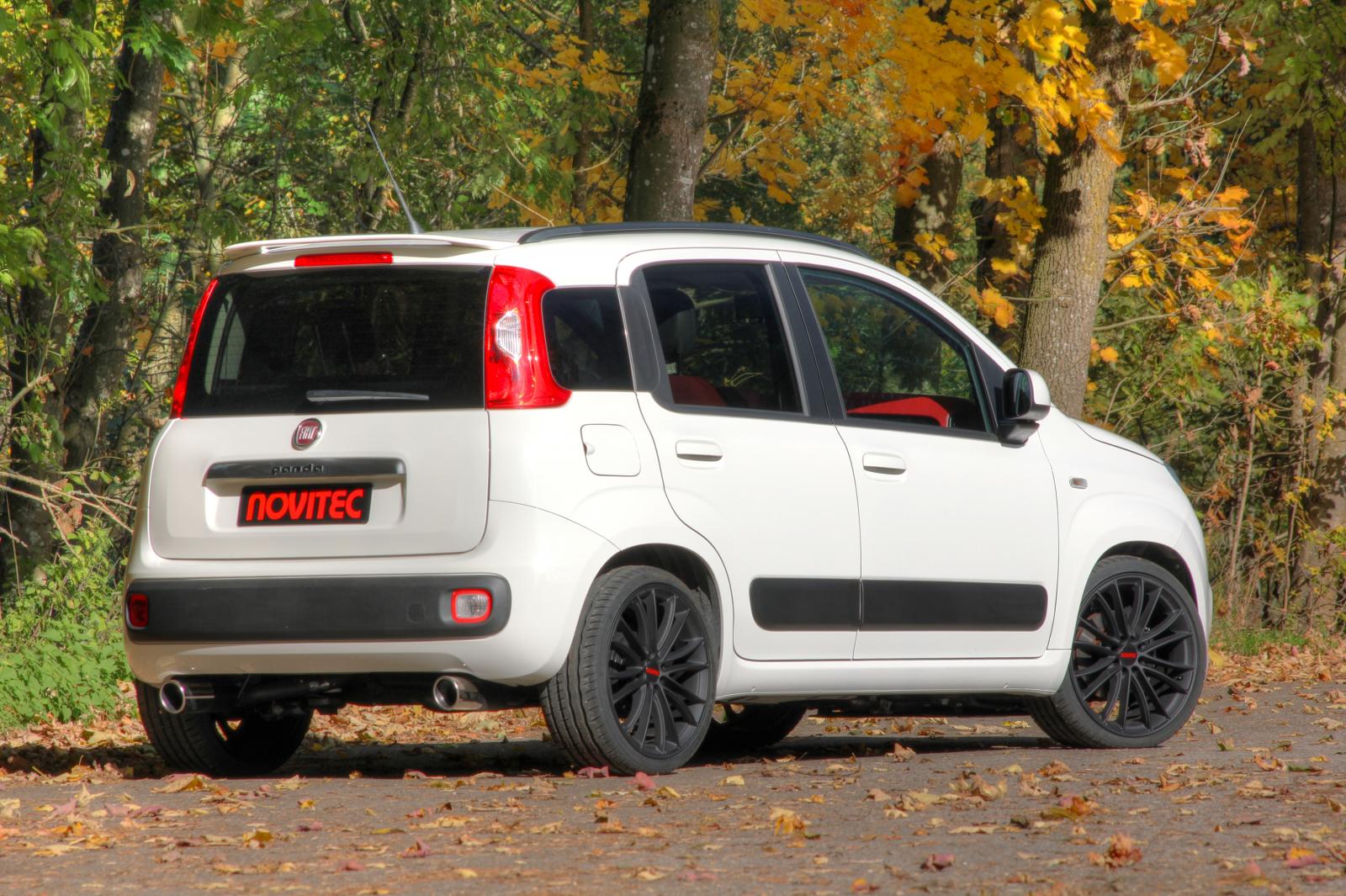

Update for the 2nd generation Panda with the new logo with the 5 stripes The first version had 19 hp, but weighed 450 kg more than the original Panda and was three times more expensive. This version had no back seat because of the batteries. Introduction of the Panda 4x4 Sisley based on the standard 4x4 with additional accessories. Introduction of the Panda Young, L specifications and the old 769cc (34hp) engine. Introduction of a 1301cc 37hp diesel version with L specifications. The 903/965cc engine was replaced by a 999cc engine with 45hp for the 2-wheel drive models and 50hp for the 4WD. The 652 air-cooled engine was replaced by a 769cc (34hp) water-cooled engine. Introduction of the 2nd generation Panda. These were the same engine as before, but had some changes in the interior and the new logo. Introduction of the Panda 4x4 965cc 48hp with the new logo and the Panda 30 Super, which was the same version as the 45 Super, but with the smaller engine. Which was a slightly more luxurious version of the Panda 45. 2003 saw the launch of the second, to be followed by today's third series, introduced in 2012.Introduction of the Panda 34 with an engine from the Fiat 133 (843cc 34hp) and the Panda 45 Super.
#Fiat panda series#
The growing success of the very long-lived first series lasted more than twenty years. An inseparable companion, and not only for mountain dwellers.

Within the space of three years the Panda models had acquired richer trim levels with the “Super” versions, and the 45 acquired a 5th gear, but additional great success came with the advent of the 4x4 version, built in association with Austrian firm Steyr-Puch, which transformed the versatile utility car from Turin into an unstoppable small, light off-road vehicle, soon to become an absolute favourite with sports enthusiasts and lovers of the outdoor life. The top speeds were over 115 km/hour and about 140 km/hour, respectively. Fuel consumption was impressively low: at 90 km/hour the Panda 30 did 19 km to a litre and the Panda 45 more than 17. The beam rear axle was mounted on double leaf springs with hydraulic dampers and had drum brakes.
#Fiat panda manual#
In just 3.38 metres, the Panda provided room for five people and immense versatility in the use of the space inside for example, the rear bench, with seven different position settings, could become a delightful hammock, a cot or a large bed.īoth the two and the four-cylinder engine were combined with a four-speed manual transmission, independent, MacPherson strut suspensions and disc brakes. It was distinguished from the Panda 45, fitted with the 4 cylinder 903 cc engine of the 127, by the different, asymmetrical position of the metal grid on the radiator grille: on the 30, the slots were on the right to supply air to the two cylinder engine's fan, while on the 45 the slots and coolant radiator were both on the left. The two-cylinder 30 HP air-cooled engine, an evolution of the historic unit introduced on the 500 in 1957 and also used on the 126, was fitted on the Panda 30, intended for the Italian market.
#Fiat panda windows#
The flat windows (including even the windscreen) provided plenty of light in the basic but very practical interior, built with simple but hard-wearing materials, all of them completely washable. The Fiat Panda's looks were functional and unfussy, with big wrap-around bumpers, a broad protective strip on the sides and large windows.

Simple in its technical layout but styled to be practical and surprisingly roomy, the Panda makes optimal use of space being compact on the outside but big on the inside. The car was officially presented to the international press at the Geneva Motor Show a few days later, on March 5.Įvolution and blend of the glorious Fiat 126 and 127, whose engines it inherits, the Panda was designed in record time by Giorgetto Giugiaro, who created a compact two-box hatchback, with two doors, tailgate and front-wheel drive.

On February 29, 1980, Giovanni Agnelli officially presented the Panda to the former President of the Italian Republic Sandro Pertini, who was astonished by the shape and proportions of the car that offered unprecedented space and comfort for a vehicle of its size. It features in many great memories but still the steady leader in its category, with over 7.5 million units produced to date. Since 1980, Panda has shared the Italian small car scene with the 500 accompanying young people and families in their lives. It is forty years young and has never looked better.


 0 kommentar(er)
0 kommentar(er)
